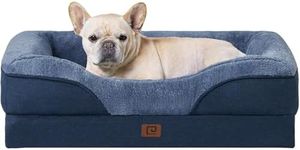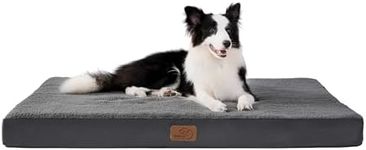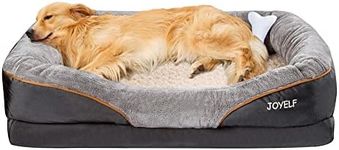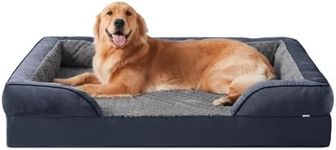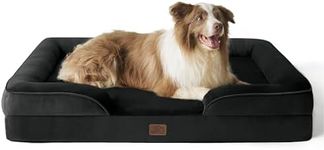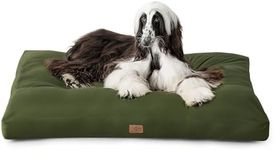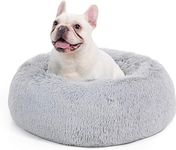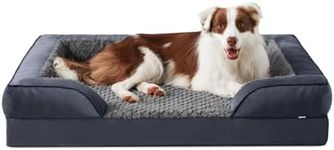Buying Guide for the Best Orthopedic Dog Beds
Choosing the right orthopedic dog bed for your furry friend is crucial for their comfort and health, especially if they have joint issues or are aging. Orthopedic dog beds are designed to provide better support and alleviate pressure points, ensuring your dog gets a restful sleep. When selecting an orthopedic dog bed, consider the following key specifications to make an informed decision that best suits your dog's needs.MaterialThe material of the orthopedic dog bed is important because it affects the bed's durability, comfort, and support. Common materials include memory foam, egg-crate foam, and high-density foam. Memory foam is known for its ability to conform to the dog's body, providing excellent support and pressure relief. Egg-crate foam offers good airflow and moderate support, while high-density foam provides firm support and is often more durable. Choose a material that matches your dog's comfort preferences and any specific health needs they may have.
SizeThe size of the orthopedic dog bed is crucial to ensure your dog has enough space to stretch out comfortably. Measure your dog from nose to tail and add a few inches to determine the appropriate bed size. Beds come in various sizes, from small to extra-large, to accommodate different breeds. A bed that is too small can be uncomfortable and may not provide adequate support, while a bed that is too large may not offer the cozy feeling some dogs prefer. Select a size that allows your dog to lie down fully and comfortably.
ThicknessThe thickness of the orthopedic dog bed affects the level of support it provides. Thicker beds generally offer better support and cushioning, which is especially important for dogs with arthritis or other joint issues. Beds typically range from 2 to 6 inches in thickness. For larger dogs or those with severe joint problems, a thicker bed (4-6 inches) is recommended to ensure maximum comfort and support. Smaller dogs or those with mild issues may be comfortable with a thinner bed (2-4 inches). Consider your dog's size and health condition when choosing the thickness.
Cover MaterialThe cover material of the orthopedic dog bed affects its comfort, durability, and ease of cleaning. Common cover materials include microfiber, fleece, and canvas. Microfiber is soft and comfortable, fleece provides warmth, and canvas is durable and resistant to wear and tear. Some covers are also waterproof or have anti-slip features. Choose a cover material that suits your dog's comfort preferences and your cleaning needs. If your dog is prone to accidents or has allergies, a waterproof and hypoallergenic cover may be beneficial.
Ease of CleaningEase of cleaning is an important factor to consider, especially if your dog sheds a lot or has accidents. Look for beds with removable and machine-washable covers to make cleaning easier. Some beds also have waterproof liners to protect the foam from moisture and stains. Regular cleaning helps maintain a hygienic sleeping environment for your dog and prolongs the life of the bed. Choose a bed that fits your cleaning routine and keeps your dog's sleeping area fresh and clean.
Non-Slip BaseA non-slip base is important to prevent the bed from sliding around, especially if your dog is active or has mobility issues. Beds with non-slip bases provide stability and safety, ensuring your dog can get in and out of the bed without difficulty. This feature is particularly useful on smooth surfaces like hardwood or tile floors. If your dog tends to move around a lot or has trouble with stability, a bed with a non-slip base can help keep them secure and comfortable.

